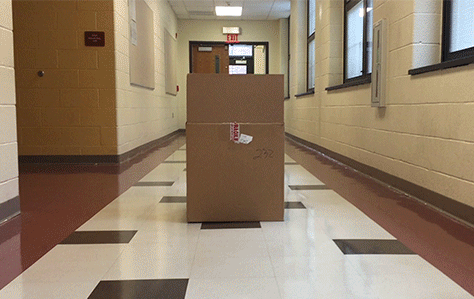Laptops take over classrooms as one-to-one initiative enters second month
October 20, 2017
The introduction of one-to-one laptops has already made an enormous difference for students and teachers.
Entering its second month, the laptops have become an integral part of many classrooms.
John Arlotta, principal of Glen Rock High School believes that laptops are preparing students for 21st century learning. He said that college students use laptops in class, so it’s more authentic for high school students to use them.
“It’s pretty standard for students to not only have laptops whether it is part of the tuition, but of all the things that go along with it such as the blended learning opportunities, the online courses, things of that nature. We felt that in order to best prepare our students to equip them with things they are going to see in college would be that way,” Arlotta said.
Before deciding on the Dell touchscreen laptops, iPads and Chromebooks were also in mind. The administration rejected these other two options because the some classes are still reasonably dependent on software. That software would not be usable on iPads or Chromebooks. For the last four years, student laptops had been a plan-in-the-works but continually faced setbacks.
The laptop launch was not without a few glitches. Google Chrome had some problems in the beginning of the school year in which students would be unable to access the web browser.
With its innate ability to link with Google Docs and Drive, the issues with Chrome needed to be addressed quickly. The laptops, however, have many benefits.
“They help me stay more organized in my notes and I have way less binders this year than I did last year because I type a lot of my notes now. However, I am a little frustrated with some of the glitches like not being able to access gmail,” said Jean Walter (‘18).
According to the Tech Department, aside from problems with Google Chrome, students mostly wanted to change power settings, such as increasing brightness. Due to restrictions through a Group Policy certificate, students were unable to adjust power settings on their own.
Rich Santos, head of the Tech Department, explained that many of the student drop-ins were quick fixes: wireless turning off and questions regarding the device or software were main inquiries.
“From a technology standpoint we are very happy with the rollout and the success of the 1:1 laptop initiative,” Santos said.
There has been a steady decrease of laptop issues since the beginning of the year.
“The problems with the laptops have been minimal. I think whenever you roll out such a huge endeavor like this to say you’re not going to have any hiccups would be naive,” Arlotta said.
Instead of several classes piling into the media center to use the computers, students can unzip their backpacks and dive into the world of technology. It is not only a more efficient way of learning, but it is much less time consuming.
Not only do the laptops provide a more efficient way to learn, it is also good for the environment. Students are printing less and using less ink.
“Going paperless is our eventual goal,” Arlotta said.





Isabella Ranieri • Oct 26, 2017 at 10:45 am
Nice article. I really like your picture.